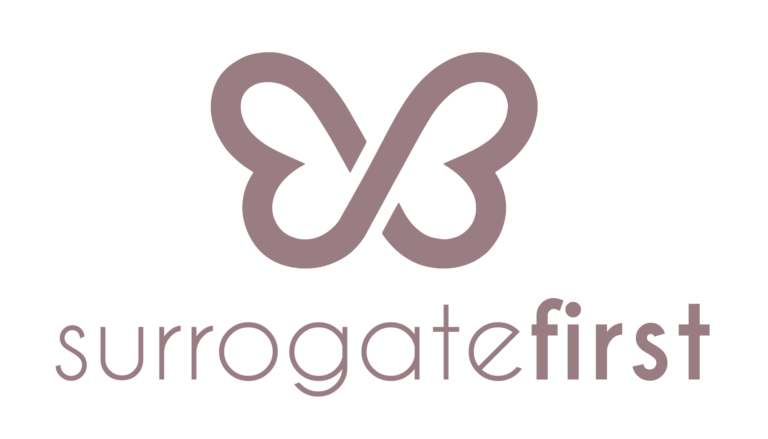Because a gestational surrogate produces breast milk after the baby is delivered to the intended parents, sometimes they wonder how to ship the breast milk to the newborn’s family.
An intended mother using a gestational surrogate won’t be able to produce her own breast milk since lactating requires a specific combination of hormones during the final months of pregnancy.
Therefore, the simplest solution is for the surrogate to pump the breast milk and send it to the intended mother for as long as the baby needs it.
Here’s are the most important things you’ll ever need to know about shipping breast milk.
What’s the difference between breast milk and regular milk?
First, it’s vital to understand that breast milk and ordinary milk from cows are different in more than a few ways.
For example, cow milk doesn’t provide nearly enough nutrients for infants, and it doesn’t even contain the right balance of proteins, fats, and carbohydrates. Even if it’s organic, Pasteurized milk may also contain additives that a baby’s body can’t digest properly.
On the other hand, breast milk is the perfect food for infants during the first few months because its composition changes as the baby’s nutritional needs change.
Breast milk will initially contain more of a compound called colostrum, which is thicker and has a yellowish hue to it. Nutrition-wise, this type of breast milk will be rich in vitamins and minerals.
The next phase in lactation produces transitional milk that contains more fat and lactose before moving on to producing mature breast milk.
That’s why many intended parents want their surrogates to provide breast milk to the infant. It’s best for the newborn’s health, so, if possible, we want surrogates to pump milk for the baby after giving birth.
What you’ll need to ship breast milk
Firstly, you’ll have to store breast milk at the right temperature and know how long it lasts before it begins to spoil. Unfortunately, many new parents make the mistake of keeping and storing breast milk like ordinary whole milk.
While similar, the composition of each milk type requires different storage solutions to keep it fresh for the newborn baby.
Pasteurization is the process that makes cow milk last for weeks before going bad, but breast milk will start to spoil in far less time.
The rule of thumb is that freshly pumped breast milk will be good at room temperature for about four hours or so; refrigerated breast milk can last for as many as four days.
So, shipping breast milk correctly depends on accounting for these two factors.
The good news is that you can also freeze breast milk in small bags or containers, and the milk will be good for about six months.
Still, the one downside is that once breast milk thaws out, you can’t refreeze it, so when you ship it, the container must stay cool enough to keep the milk frozen.
Along those lines, to ship breast milk correctly, you’ll need:
- Freezer-safe storage bags for liquids
- Medium-sized Styrofoam cooler
- Cardboard or shipping container
- Newspaper or packing material
- Dry ice or a safer substitute (e.g., “blue ice” packs)
- Packaging tape
- Pen to label the package as perishable
After that, here’s how you put the package together.
How to pack and ship breast milk
The packaging process is pretty straightforward, but there are a few tips to keep in mind!
Mainly, you have to make sure that you pack the container tightly since it’ll warm up faster if you leave too much room on the sides.
You can also place a layer of packaging materials or newspaper on the bottom of the cooler before placing the bags of frozen milk inside.
But always remember to put another layer of newspaper or packaging material on top of the milk before putting the dry ice or blue ice on top of it!
If dry ice touches the frozen plastic bags, they’ll stick. You won’t be able to separate them without ripping the bag!
After that, some people like to place an additional layer of newspaper and then seal the cooler with packaging tape.
The final step is to pack the cooler inside of the shipping container or cardboard box and remember to label it as perishable. That way, shipping companies will know how to handle the package (i.e., don’t leave it near excessive heat).
In the end, shipping breast milk is easy once you know the essentials.
Who covers the expenses of shipping breast milk?
In most surrogacy contracts, intended parents are the ones who cover the cost of breast milk shipping. That includes all supplies, courier fees, and sometimes even extra compensation for the surrogate’s time and effort.
Here’s what’s typically covered:
- A hospital-grade breast pump (if the surrogate doesn’t already have one)
- Storage bags, coolers, dry ice, and shipping containers
- Shipping fees, especially for overnight delivery
- Compensation for time spent pumping, which should be discussed and agreed upon before the birth
If you’re the surrogate, don’t hesitate to speak up about reimbursement. Pumping and shipping milk is a huge gift, and your effort should be supported, not overlooked.
What is the cost of shipping breast milk?
Shipping breast milk can get pricey, depending on how far it’s going and how fast it needs to get there.
- Distance plays a big part. Sending milk across states or the country costs more than shipping locally.
- Shipping speed matters too. Overnight or express shipping is often needed to keep the milk fresh, especially without dry ice. That can cost anywhere between $50 to $150 per shipment.
- Supplies and packaging also add to the total. Things like gel packs, coolers, and dry ice can cost an extra $20 to $40. Some parents choose to buy breast milk shipping kits online for convenience.
- The size of your shipment affects the price too. More milk means a heavier box and higher costs.
All in, the total cost of one shipment can land anywhere from $100 to $200, especially if you’re aiming for overnight delivery and solid packaging. If you plan to ship regularly, look into reusable coolers or discounted courier services to save money over time.
How often do you need to ship breast milk?
That depends on a few things, like how much milk the surrogate is producing and how often the baby needs to eat.
- Newborns typically feed 8 to 12 times a day, so parents need a reliable supply
- If the surrogate produces a lot of milk, they might only need to ship once or twice a week
- If supply is lower or storage space is limited, smaller, more frequent shipments every 2 to 3 days might work better
- If the intended parents have a freezer, bulk shipments are easier to manage
- If the surrogate and family live near each other, local drop-offs or same-day courier services may be an option instead of shipping
The best thing you can do is set a schedule that works for both parties. Communication is key. You can always adjust the frequency depending on the baby’s appetite and the surrogate’s pumping output.
Why SurrogateFirst?
At SurrogateFirst, we’re more than a matching agency—we’re your support system.
- Compassionate, personalized matching
- 24/7 access to dedicated case managers
- Legal and medical coordination
- Transparent pricing
- Emotional support for surrogates and for intended parents alike






